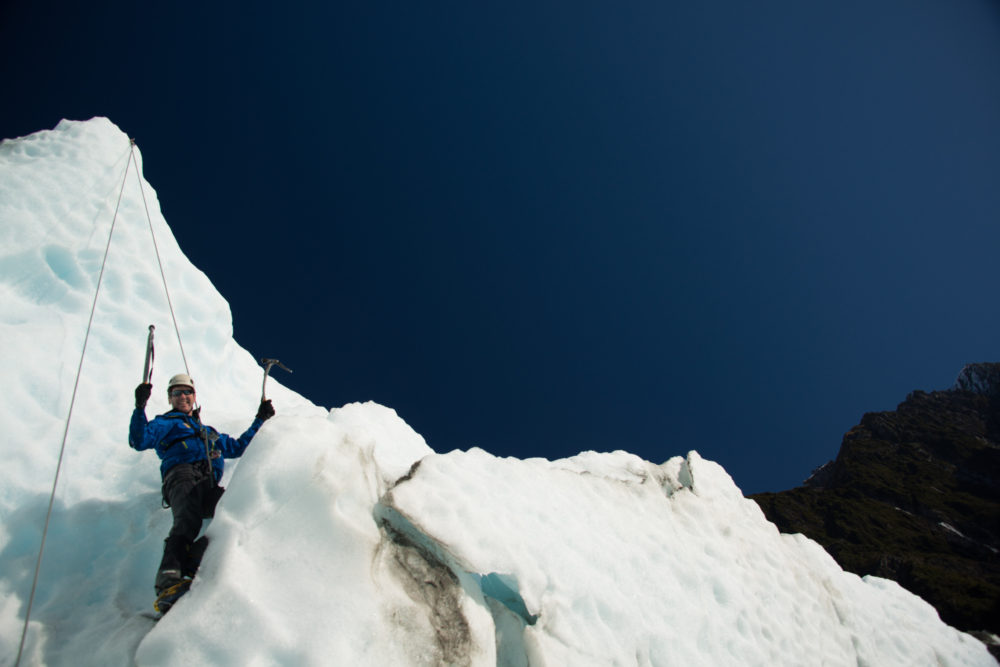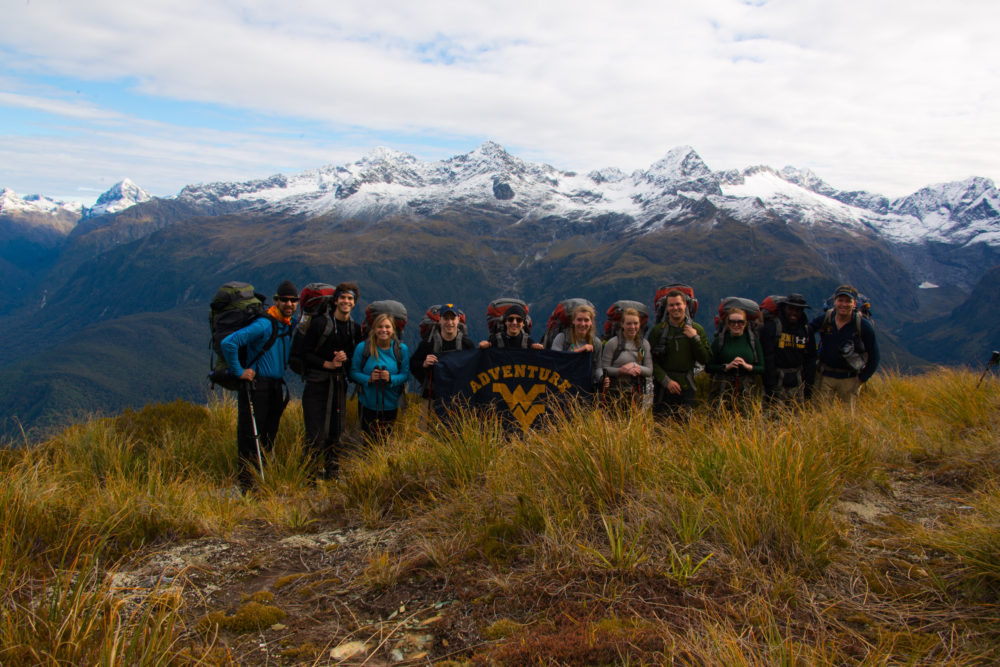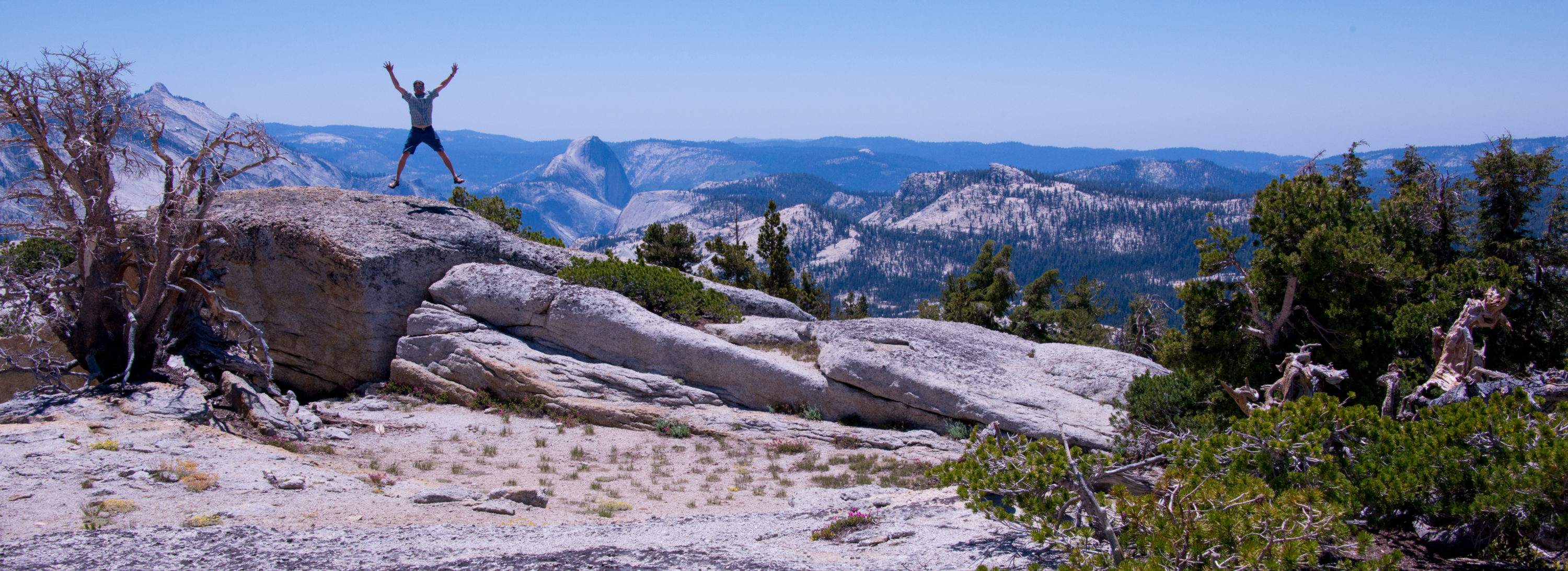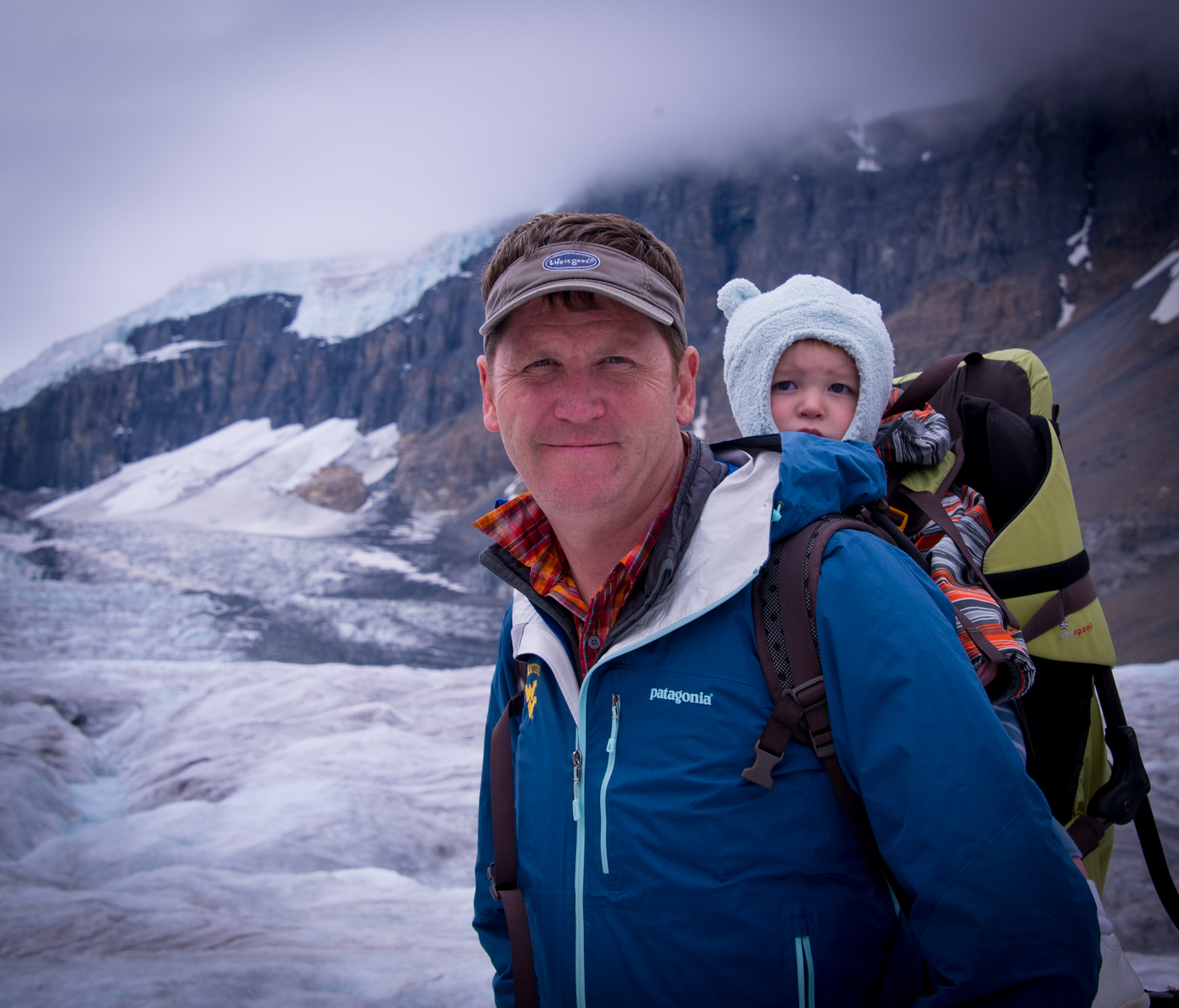If you tune into the Teva Mountain Games, an annual adventure sports competition, you’ll see the world’s best ice climbers swinging ice axes and kicking crampons into climbing walls featuring artificial holds designed to mimic the action of climbing ice. The high-tech material conjures up images of chemists in white lab coats pouring smoky liquids into beakers, deep in some hidden lab in the Rockies. The idea, however, materialized in the mind of Greg Corio, right here in the green hills of Morgantown.

While his invention may be artificial, his life story certainly is not. From participation in extreme sports and a revolutionary climbing invention to forming a major outdoor recreation program and leading hundreds of college students on excursions around the world, Corio is one of Morgantown’s most prominent names in outdoor adventure.
Hailing from the small town of Grafton on the banks of the Tygart River, Corio has had a lifelong obsession with adventure sports. Throughout the evolution of his life, Corio has been an avid climber, mountain biker, snow boarder, kayaker, and backpacker. He has grown into his role as Executive Director for Campus Recreation and Outdoor Education at West Virginia University, where he founded and heads the Adventure WV program. He and his wife, Emily, have two sons—Bryce, 7, and Glen, 15-months. The Corio clan remains active in the great outdoors; Greg somehow still finding the time to be a father, leader and extreme athlete.
Corio’s decision to make a career of his leisurely pursuits began at Garrett College in the mountains of western Maryland, where he received a bachelor’s degree in adventure sports management. He got his first taste of ice climbing while on a spring break outing. Already skilled in going with the flow of descending a frothing river, he became enthralled with the paradoxical process of ascending its frozen vertical counterpart.
Ice climbing in Appalachia, however, is the definition of a fleeting activity. Mild winters and continuous freeze-thaw cycles mean that ice climbers in West Virginia may only get a few trips per year—and need to be able to drop everything in an instant when the ice comes in. In the long off-season, Corio wanted to train for his new passion. He started making his own climbing holds because he couldn’t afford the pricier prefabricated offerings. “There was no artificial simulation to ice climb,” Corio says. Dry tooling—a method of hanging the pick of an ice axe like a hook onto rock edges or plastic climbing holds—was the only method of training with ice tools.
The idea hit him like a chunk of ice falling onto a belayer. Corio decided to create a climbing hold he could swing an axe into—something that could withstand the impact from and hold the tip of an ice tool. After brainstorming different products, he figured high-density foam would hold up to the aggressive demands of a training ice climber. Corio acquired foam samples of various strengths, mounted them to a wall, and started swinging. “It acts like a dart board or an archery target that allows you to put your body weight into it,” he says.
In the spring of 1999, Corio took a step onto thin ice when he cold called Entre Prises, a leading climbing hold manufacturer based in Bend, Oregon, and pitched his idea to the company’s president. The ice held, and after successful product testing, Corio sold his idea. In January of 2000, Dry Ice was officially introduced at the Outdoor Retailer show, an annual gear tradeshow held in Salt Lake City. Corio states that at the time of its debut, industry pros considered Dry Ice one of the top ten inventions in the climbing industry.
Dry Ice continues to be a mainstay at Outdoor Retailer shows to display the newest ice climbing gear—high-profile ice climbers like Conrad Anker and Will Gadd demo these cutting-edge tools by ascending his invention. For Corio, Dry Ice resulted in far more than financial gain. “What that experience taught me was that you can take risks and try to do things and see the reward for the future,” he says.
After Dry Ice, Corio went on to pursue a master’s degree in Recreation, Parks, and Tourism Resources at WVU. As part of a graduate project in 2003, he founded Adventure WV— an outdoor orientation program for incoming students that has blossomed into an iconic WVU experience. “[Dry Ice] gave me the confidence to try Adventure,” he says. “You can make these crazy ideas and turn them into something.”
 Now the largest outdoor education program in the country, Adventure WV has 12 full-time employees and has sent ambitious adventurers all over the 50 states, and on excursions to Patagonia, New Zealand, Fiji, and South Africa. Through Adventure WV, students have completed over 40,000 hours of community service and planted over 20,000 trees. “We offset our environmental impact by doing community service,” Corio says. “By doing that responsibly, you help build the infrastructure. By doing it right we can minimize our environmental impact.”
Now the largest outdoor education program in the country, Adventure WV has 12 full-time employees and has sent ambitious adventurers all over the 50 states, and on excursions to Patagonia, New Zealand, Fiji, and South Africa. Through Adventure WV, students have completed over 40,000 hours of community service and planted over 20,000 trees. “We offset our environmental impact by doing community service,” Corio says. “By doing that responsibly, you help build the infrastructure. By doing it right we can minimize our environmental impact.”
Although Corio’s mission with Dry Ice ended years ago, his mission of promoting outdoor recreation in West Virginia continues. “We’re an untapped resource with incredible potential to become the adventure tourism capital of the east coast,” he says. He cites the oft-repeated recreation statistic that West Virginia is within a day’s drive of over 50% of the U.S. population. “You go to a place here, and most license plates are from out of state. It’s like, ‘wow, we have all of this here—why don’t more people know about this?’”
Corio seems to be well on his way to answering that question with Adventure WV. “It’s the best way to transition students to university life,” he says. “It helps incoming students make friends, fall in love with West Virginia, and realize the resources we have in the state.” He’s got the data to back his claims—Corio claims students who complete the Adventure WV Orientation Experience have higher rates for retention and six-year graduation. Adventure WV is a financial boon for WVU as well—for every dollar invested in the program, $10.60 is returned to the university.
While Corio has traveled quite extensively, his favorite places lie within the boundaries of the Mountain State. The Corio family resides just outside of Morgantown on Snake Hill, where they have immediate access to the wealth of recreation opportunities in the Snake Hill Wildlife Management Area. Corio rock climbs regularly with Bryce on the gritstone faces overlooking the Cheat River Canyon. Another location he loves is the New River Gorge. “You can climb, swim, bike, and run the whitewater of the New.” He’s also partial to the Potomac Highlands. “Culturally, they have a lot to offer. Great bike trails, the backpacking of Dolly Sods, and, of course, Seneca Rocks.”

—
Dylan Jones is a freelance writer and photographer based in the mountains of West Virginia. Contact him at dcjones84@gmail.com

